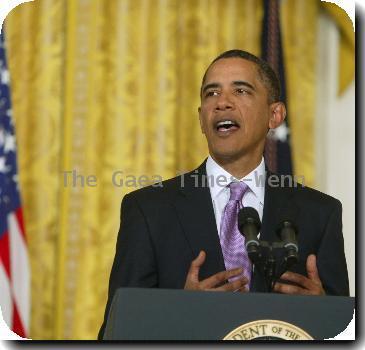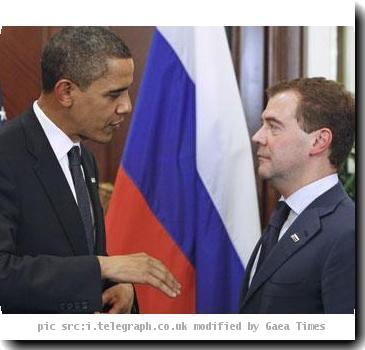BP says mud pumped into well in Gulf is holding down the oil; feds say most of oil is gone
By Harry R. Weber, APWednesday, August 4, 2010
As BP plugs leak, report says most of oil is gone
NEW ORLEANS — BP claimed a key milestone Wednesday in a drive to permanently plug its blown-out oil well, upbeat news that dovetailed with a federal report indicating much of the spilled crude has disappeared, though officials cautioned that recovery is far from over.
BP PLC reported that mud that forced down the well overnight was pushing the crude back down its source for the first time since the Deepwater Horizon rig exploded off Louisiana on April 20, killing 11 workers.
Crews still have to determine whether an area between the inner piping and outer casing of the blown-out wellhead is leaking — something they say they can’t answer until they drill in from the bottom later this month.
“There’s a lot of reasons why there’s no ‘Mission Accomplished’ banner,” White House spokesman Robert Gibbs told reporters in Washington.
“There’s a lot of work to do,” he said. “We’re not leaving the area, and more importantly, we’re not leaving behind any commitment to clean up the damage that’s been done and repair and restore the Gulf.”
Still, the plugging is progressing, giving officials high confidence that no more oil will leak into the Gulf, retired Coast Guard Adm. Thad Allen, the government’s point man on the spill response, said at a news briefing in Washington.
Crews that performed the so-called “static kill” overnight now must decide whether they should follow up by pumping cement down the broken wellhead, and officials said they won’t declare complete victory until they see what happens when they drill in from the other end.
“This job will not be complete until we finish the relief well and pump mud and cement in through the bottom,” Allen said.
The news coincided with the release of a federal report Wednesday indicating that only about a quarter of the spilled oil remains in the Gulf and is degrading quickly, with the rest contained, cleaned up or otherwise gone.
The remaining oil, much of it below the surface, remains a threat to sea life and Gulf Coast marshes, said Jane Lubchenco, administrator of the National Oceanic and Atmospheric Administration. But the spill no longer poses a threat to the Florida Keys or the East Coast, according to the report by NOAA and the Interior Department.
“I think it is fairly safe to say … that many of the doomsday scenarios that we talked about and repeated a lot have not and will not come to fruition,” Gibbs said.
President Barack Obama, while noting that people’s lives “have been turned upside down,” declared that the operation was “finally close to coming to an end.”
A Florida State University oceanographer who has long been tracking the spill, and who early on challenged the government’s low estimates of its size, called the report “spin.”
“There’s some science here, but mostly it’s spin, and it breaks my heart to see them do it,” said the oceanographer, Ian MacDonald. “This is an unfortunate report. I’m afraid this continues a track record of doubtful information distributed through NOAA.”
The calculations were based on daily operational reports, estimates by scientists and analyses by experts. The government acknowledged it made certain assumptions about how oil dissolves in water naturally over time.
Lubchenco defended the report, saying authors used direct measurements and the best estimates available and have a high degree of confidence in them. The numbers can be updated as new information comes in, she noted.
Nearly three-quarters of the oil — more than 152 million gallons — has been collected at the well by a temporary containment cap, been cleaned up or chemically dispersed, or naturally deteriorated, evaporated or dissolved, the report said.
That leaves nearly 53 million gallons in the Gulf. The amount remaining — or washed up on the shore — is still nearly five times the size of the 11 million-gallon Exxon Valdez spill, which wreaked environmental havoc in Alaska in 1989.
About a quarter of the oil evaporated or dissolved in the warm Gulf waters, the same way sugar dissolves in water, federal officials said. Another one-sixth naturally dispersed because of how it leaked from the well. Another one-sixth was burned, skimmed or dispersed using controversial chemicals.
Nearly 207 million gallons leaked from the well in total, according to government estimates. The cap held back nearly 35 million gallons.
Charter boat captain Randy Boggs, of Orange Beach, Ala., said Wednesday he has a hard time believing BP’s claims of success with the static kill and similarly dismissed the idea that only a quarter of the oil remains in the Gulf.
“There are still boats out there every day working, finding turtles with oil on them and seeing grass lines with oil in it,” said Boggs, 45. “Certainly all the oil isn’t accounted for. There are millions of pounds of tar balls and oil on the bottom.”
At the entrance to Gulf Islands National Seashore at Pensacola Beach, Fla., Don Allen still wasn’t expecting to sell many snow cones or Italian sausages from his food truck.
“I don’t know where it went if it’s not out there,” said Allen, who had to lay off his son because business was slow as tourists abandoned beaches. “It’s all just numbers, and it has changed so often.”
The 75-ton cap placed on the well in July had been keeping the oil bottled up for three weeks but was considered only a temporary measure. BP and the Coast Guard wanted to plug up the hole with a column of heavy drilling mud and cement to seal it off more securely.
BP Senior Vice President Kent Wells said that although the static kill “went extremely well,” he’s not yet ready to declare the operation a complete success.
“We’re looking at exactly how that procedure went. We’re looking at all the different risks,” he said. “I think the phrase ‘an overabundance of caution’ would apply.”
“It’s a milestone,” BP spokeswoman Sheila Williams said. “It’s a step toward the killing of the well.”
The crew aboard the vessel the Q4000, which was used to pump in the mud, had been eager for the effort to work.
Michael Bromwich, who as head of the Bureau of Ocean Energy Management, Regulation and Enforcement is the nation’s top drilling regulator, said Tuesday that the Obama administration was considering tossing out the six-month ban.
Browner told NBC it was good news that the static kill was working but that “we remain focused on the relief well.”
The task is becoming more urgent because peak hurricane season is just around the corner, Allen said. Tropical Storm Colin formed then dissipated far out in the Atlantic on Tuesday, but early forecasts say it will travel toward the East Coast rather than the Gulf.
Weber reported from aboard the Q4000. Contributing to this report were Associated Press writers Dina Cappiello in Washington, Jay Reeves in Birmingham, Ala., Jason Dearen in Yscloskey, La., Bernard McGhee in Atlanta and Robert Barr in London.
Tags: Accidents, Alabama, Arts And Entertainment, Barack Obama, Coastlines And Beaches, District Of Columbia, Energy, Environmental Concerns, Florida, Louisiana, New Orleans, North America, Oceanography, Oceans, On The Gulf Of Mexico, Pensacola, Television Programs, United States









